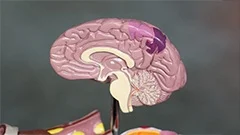Introduction
Statistical modeling and regression is a fundamental topic in biostatistics, enabling researchers to analyze and interpret complex relationships between variables in biological data. This course will provide an in-depth exploration of statistical modeling and regression techniques, with a focus on their applications in biological research.
Objectives
By the end of this course, students should be able to:
- Understand the concept of statistical modeling and its importance in biology.
- Explain the principles of linear regression, multiple regression, and logistic regression.
- Apply these techniques to real-world biological datasets.
- Interpret and critique regression models, including assessment of model assumptions and diagnostics.
- Utilize software tools for implementing regression analyses.
Prerequisites
To maximize the benefits from this course, students should have a solid foundation in mathematics, specifically linear algebra, calculus, and probability theory. Familiarity with programming concepts and proficiency in R or Python is also advantageous but not strictly required.
Chapter 1: Statistical Modeling and Linear Regression
1.1 Introduction to Statistical Modeling
Statistical modeling provides a systematic framework for understanding and describing the relationships between variables, particularly when analyzing complex biological data. This section will introduce the key principles of statistical modeling, including assumptions, model selection, and interpretation of results.
1.1.1 Linear Relationships
Linear relationships are ubiquitous in biological data, and understanding their properties is essential for accurate analysis and interpretation. This subsection will discuss the characteristics of linear relationships, including homoscedasticity, independence, and normality.
1.2 Simple Linear Regression
Simple linear regression is a basic statistical modeling technique used to describe the relationship between a dependent variable (y) and a single independent variable (x). This section will cover the derivation of the linear regression model, as well as the calculation of slope and intercept.
1.2.1 Assumptions of Simple Linear Regression
Understanding the assumptions underlying simple linear regression is crucial for correct interpretation of results. This subsection will discuss the key assumptions, including linearity, homoscedasticity, independence, normality, and lack of multicollinearity.
1.2.2 Assessing Goodness-of-Fit and Model Selection
Assessing the goodness-of-fit of a simple linear regression model is essential for determining its appropriateness in describing the underlying relationship between variables. This subsection will introduce various measures of goodness-of-fit, including R², adjusted R², and mean squared error (MSE). Additionally, methods for model selection, such as backward elimination and stepwise regression, will be discussed.
1.3 Multiple Linear Regression
Multiple linear regression extends simple linear regression to include multiple independent variables, enabling the analysis of more complex relationships between variables. This section will cover the derivation of the multiple linear regression model, the calculation of coefficients, and the interpretation of the results.
1.3.1 Assumptions of Multiple Linear Regression
As with simple linear regression, it is essential to understand the assumptions underlying multiple linear regression for correct interpretation of results. This subsection will discuss the key assumptions, including linearity, homoscedasticity, independence, normality, and lack of multicollinearity in multiple variables.
1.3.2 Assessing Goodness-of-Fit and Model Selection in Multiple Linear Regression
Assessing the goodness-of-fit of a multiple linear regression model is more complex than for simple linear regression due to the increased number of independent variables. This subsection will introduce various measures of goodness-of-fit, including R², adjusted R², and MSE, as well as methods for model selection in multiple linear regression, such as backward elimination and stepwise regression.
Chapter 2: Advanced Regression Models
2.1 Logistic Regression
Logistic regression is a powerful statistical modeling technique used for analyzing binary or dichotomous data, where the dependent variable can take on only two values (e.g., presence/absence, success/failure). This section will cover the derivation of the logistic regression model and the interpretation of the results.
2.1.1 Assumptions of Logistic Regression
Understanding the assumptions underlying logistic regression is crucial for correct interpretation of results. This subsection will discuss the key assumptions, including independence, lack of multicollinearity, and appropriate distribution of the independent variables.
2.2 Generalized Linear Models (GLMs)
Generalized linear models (GLMs) are an extension of linear regression that allows for the analysis of data with non-normal distributions, such as count or proportional data. This section will cover the derivation of GLMs and their applications in biological research.
2.2.1 Assumptions of Generalized Linear Models (GLMs)
Understanding the assumptions underlying GLMs is crucial for correct interpretation of results. This subsection will discuss the key assumptions, including independence, linearity, and appropriate distribution of the error term.
Chapter 3: Practical Applications
This chapter will provide real-world examples of applying statistical modeling and regression techniques to biological datasets. Students will learn to manipulate data, fit models, interpret results, and critique model assumptions.
Conclusion
Statistical modeling and regression are essential tools for understanding complex relationships between variables in biological research. By mastering these techniques, students will be well-equipped to analyze and interpret data, make informed conclusions, and contribute to the advancement of knowledge in their field.
MCQ: Test your knowledge!
Do you think you know everything about this course? Don't fall into the traps, train with MCQs! eBiologie has hundreds of questions to help you master this subject.
These courses might interest you
Create a free account to receive courses, MCQs, and advice to succeed in your studies!
eBiologie offers several eBooks containing MCQ series (5 booklets available free for each subscriber).



